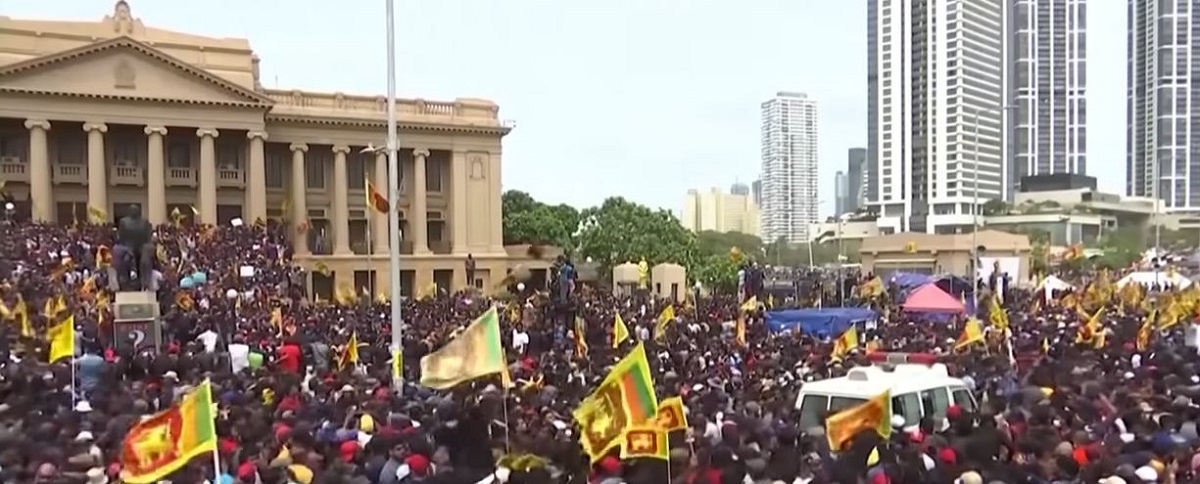Vienna 7/11/2022
Sri Lanka: In extraordinary scenes on Saturday, 9 July 2022, during a massive protest, tens of thousands of protesters broke through police barriers and stormed president’s Rajapaksa official residence. Later that night after an hours-long standoff between the riot police and the protesters, the home of the prime minister Wickremesinghe was set on fire too.
Having fled the city of Colombo with a navy ship, the Sri Lankan president, Gotabaya Rajapaksa, has agreed to step down from power on 13 July.
It was a historic victory for the protesters who have been calling for Rajapaksa to resign in widespread protests since March 2022, following Sri Lanka’s heavy food, fuel and medicines shortages. All sales of petrol have been suspended, schools have been shut and medical procedures and surgeries have been mostly cancelled indefinitely, and more than two-thirds of the country’s 22 millions population are struggling to find food.
Having suffered for such a long time, the protesters that stormed the president’s palace were shocked to see the luxury in which Rajapaksa (a former military man) was living, while the people were starving.
It has to be noted that the Rajapaksa ultranationalist family, accused of corruption and mismanaging the economy for the gain of the few, are Sri Lanka’s most powerful political dynasty, holding the positions of president, prime minister, finance minister and several other senior cabinet posts in the government.
This is how the dramatic events of Saturday in Colombo, the capital of Sri Lanka, were described on YouTube.
It is the first and weakest link in the chain, broken by the global currency crisis. The foundation stone for this tragedy was laid over 100 years ago on the American island of Jekyll Island in the Atlantic state of Georgia. If you are interested in the history of money, you can read about it here.
If an influential group of the world’s richest people managed to take control of the US financial system, it should come as no surprise that this system was designed to help them achieve their goals.
The Fed’s policy could only delay the total economic collapse of the USA and led to a temporary appreciation of the US dollar. The Fed now has a choice between plague and cholera: fight inflation by raising interest rates and bankrupting thousands of companies while spreading unemployment and recession, or print more money to bail out those companies and thereby help fuel inflation further. Apparently, the FED has decided to wait until the US general elections in November of this year to make any radical decisions.
I have written a lot about the WEF – World Economic Forum in this blog. This organization represents the interests of the unknown gray eminences. Klaus Schwab, George Soros, Jeff Bezos or Bill Gates are just characters in the game who appear in public space. The most influential do not appear on television. They can be found among the shareholders of the world’s largest financial companies such as BlackRock, Vangard, State Street and Fidelity.
In 2017, IPS researchers (IPS – Institute for Political Studies) presented the WEF transformation map for Sri Lanka. Five years after Sri Lanka’s bankruptcy, more countries will soon follow.

Author of the article: Marek Wojcik
